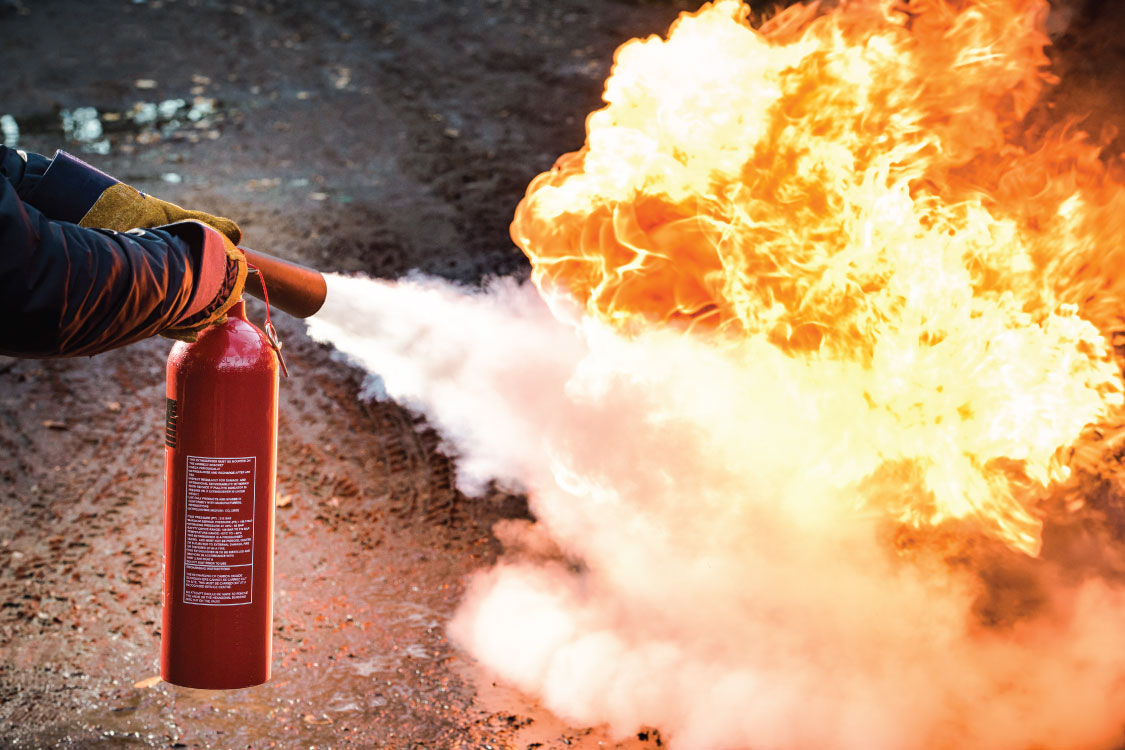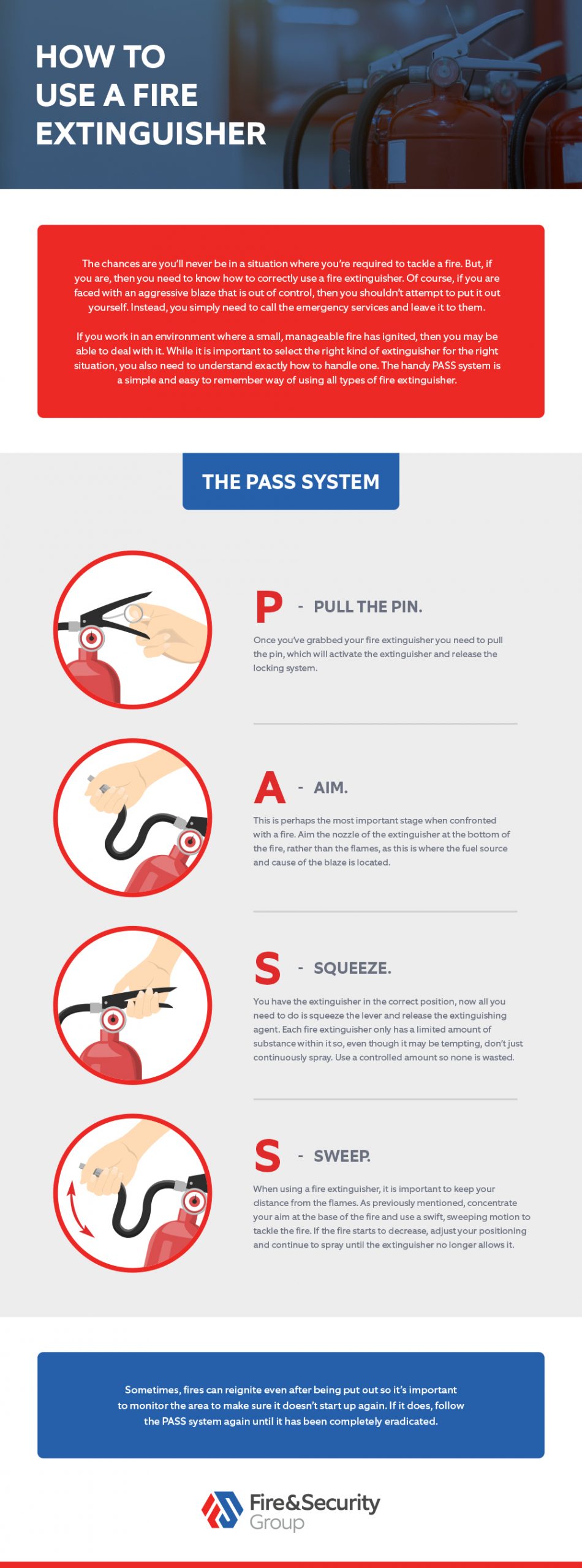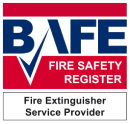3 March 2021
How to use a Fire Extinguisher
The chances are you’ll never be in a situation where you’re required to tackle a fire. But, if you are, then you need to know how to correctly use a fire extinguisher. Of course, if you are faced with an aggressive blaze that is out of control, then you shouldn’t attempt to put it out yourself. Instead, you simply need to call the emergency services and leave it to them.
If you work in an environment where a small, manageable fire has ignited, then you may be able to deal with it. While it is important to select the right kind of extinguisher for the right situation, you also need to understand exactly how to handle one. The handy PASS system is a simple and easy to remember way of using all types of fire extinguisher.

The PASS system
P- Pull the pin. Once you’ve grabbed your fire extinguisher you need to pull the pin, which will activate the extinguisher and release the locking system.
A- Aim. This is perhaps the most important stage when confronted with a fire. Aim the nozzle of the extinguisher at the bottom of the fire, rather than the flames, as this is where the fuel source and cause of the blaze is located.
S- Squeeze. You have the extinguisher in the correct position, now all you need to do is squeeze the lever and release the extinguishing agent. Each fire extinguisher only has a limited amount of substance within it so, even though it may be tempting, don’t just continuously spray. Use a controlled amount so none is wasted.
S- Sweep. When using a fire extinguisher, it is important to keep your distance from the flames. As previously mentioned, concentrate your aim at the base of the fire and use a swift, sweeping motion to tackle the fire. If the fire starts to decrease, adjust your positioning and continue to spray until the extinguisher no longer allows it.
Sometimes, fires can reignite even after being put out so it’s important to monitor the area to make sure it doesn’t start up again. If it does, follow the PASS system again until it has been completely eradicated.
There are many different types of fire extinguisher out there, with different types of fires requiring different extinguishers. Using the incorrect extinguisher could have disastrous consequences, and even prove fatal. With this in mind, there are a number of things to consider when selecting an extinguisher.
When to use Water Fire Extinguishers
Water extinguishers are perhaps among the most common and come with a red label. They are great at combating class A fires, which include blazes triggered by wood, paper and textiles. There are four different types of extinguishers that fall into this category including: water jet, water spray, water with additives and water mist or fog.
Each of these types works slightly differently. For example, a water jet extinguisher expels a long, strong jet of water, whereas a water spray releases fine droplets. Water with additives include chemicals that can soak into burning material more easily, and the water mist extinguishers, while similar to a water spray option, can cover a larger surface area.
Unsurprisingly, water extinguishers should not be used on fires caused by electricity, as they could cause dangerous shocks to the person applying it.
When to use Foam Fire Extinguishers
Foam fire extinguishers are most well-suited to fires that include liquid accelerants such as fuel. Using foam on a fire caused by petrol or diesel is much more useful than water as the foam will seal the surface of the liquid, preventing its flammable vapours from entering the air and reigniting.
All foam extinguishers have cream labels.
When to use a Powder Fire Extinguisher
A versatile option, powder extinguishers can be used on class A, B or C fires and are marked with a blue label. This means they’re appropriate for a variety of different blazes, including those caused by wood, paper, flammable liquids and flammable gasses like methane or propane.
But, unlike other options, these extinguishers can cause a lack of visibility and breathing problems to those using it. With this in mind, they’re much safer to use outdoors and should be avoided in indoor settings unless absolutely necessary.
When to use Carbon Dioxide Fire Extinguishers
If you work with a lot of electronic equipment in an office, such as computer servers, then a carbon dioxide extinguisher is definitely the way to go. One of the few extinguishers that can be safely used on an electric fire, they smother the flames not allowing access to an air supply – resulting in it becoming extinguished. As well as this, unlike a foam extinguisher, they do not leave any leftover residue. These fire extinguishers come with a black label.
When to use a Wet Chemical Fire Extinguisher
If your fire has been started in the kitchen, due to cooking oils or fats, then a wet chemical extinguisher is the best option. The chemicals in the spray reduce the flames, cool the oil and seal the surface to prevent it from reigniting.
While designed specifically for class F fires, (fires caused by cooking oils or fats) they can also be used on class A or class B fires if you have no alternative. These extinguishers have a yellow label.
Fire blankets are also worth considering, but their main use is to tackle fires caused by oils on frying pans or deep fat fryers. They can also be used if someone’s clothing has set fire as a way of smothering it.
Our team at Fire & Security Group are experts in all things fire safety. Whether you require fire alarm installation, the supply of all types of fire extinguishers or even some fire safety training, we’re on hand to help. Simply contact us today, for more information.


